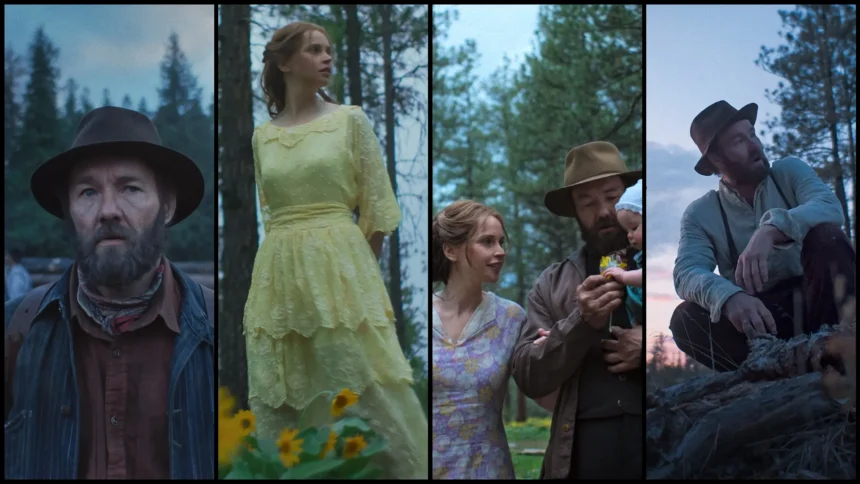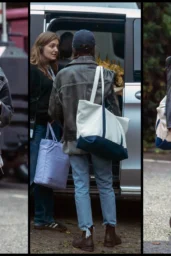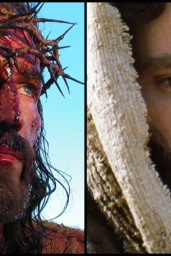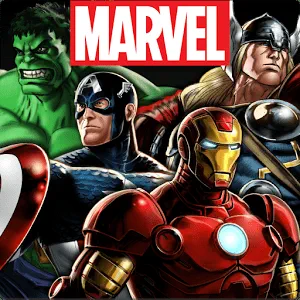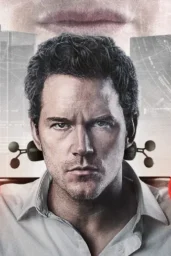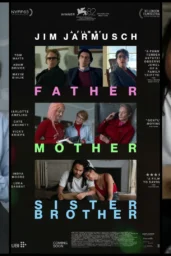The Long Shadow of Progress: Clint Bentley’s Train Dreams Arrives with a Whisper That Feels Like Thunder
There’s something ghostly about the way Train Dreams moves — like steam dissipating in cold air. The new trailer for Clint Bentley’s adaptation of Denis Johnson’s novella (debuting in select theaters November 7, 2025, and streaming worldwide on Netflix November 21) doesn’t roar; it hums. It’s beautiful, quiet, almost painfully so. And in that silence, Joel Edgerton builds something extraordinary.
Set in the early 20th century, Train Dreams follows Robert Grainier — a logger and railroad worker witnessing the relentless march of progress across the American frontier. It’s a film that seems less interested in nostalgia and more obsessed with how memory corrodes under industrial noise. Bentley, who made Jockey and co-wrote Sing Sing, crafts every frame with painterly intent. You can feel the texture of bark, the ache of distance.
A Slow Burn Rooted in Soul and Soil
When the trailer opens with Will Patton’s gravelly narration — “Do you think bad things that we do follow us through life?” — it’s not rhetorical. The question hangs in the air, like smoke refusing to clear. Edgerton’s Robert isn’t a man of words. His silence speaks in rhythms of toil, guilt, and longing. Felicity Jones flickers through as the emotional echo of another life — gone but not forgotten.
Bentley’s storytelling seems closer to Malick than to traditional Americana. Bryce Dessner’s score — orchestral, minimalist, aching — underlines that. Every plucked string feels like it’s cutting through sawdust and memory. This is cinema that takes its time, and you either tune in or it leaves you behind.
And yes, Netflix doing a two-week exclusive theatrical run before streaming is a small miracle. The platform’s faith in slow cinema feels rare — almost rebellious.
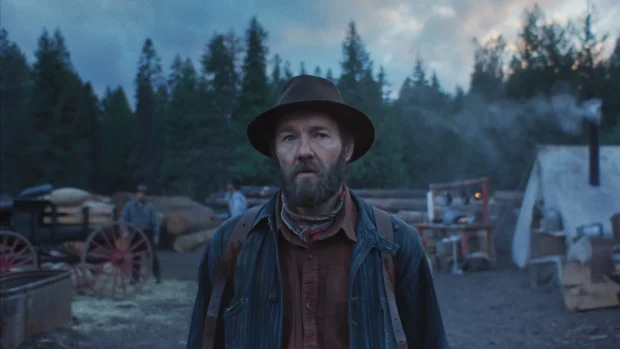
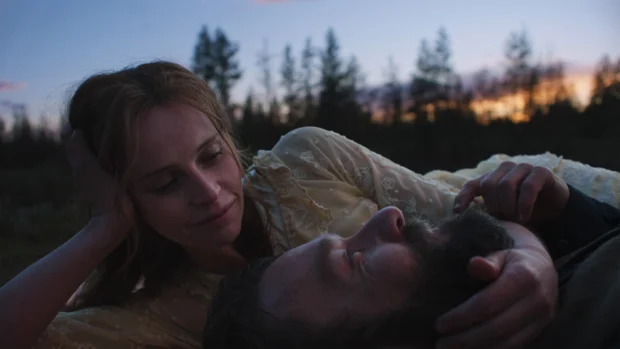
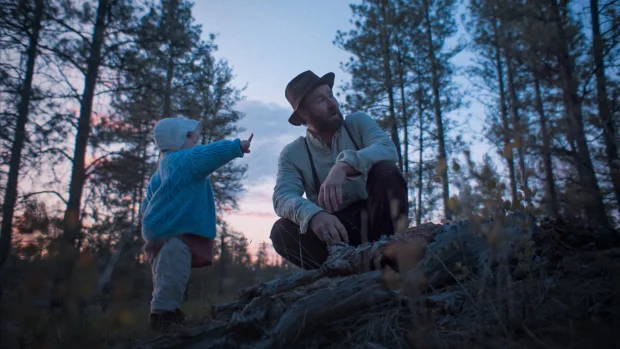
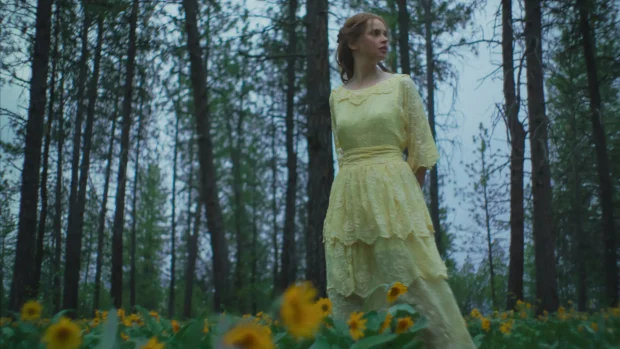
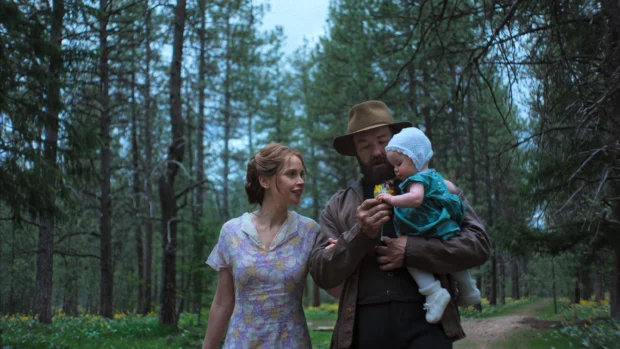
From Sundance Glow to Global Stage
Train Dreams premiered at the 2025 Sundance Film Festival, earning waves of critical praise for its visual precision and emotional restraint. It was one of those screenings where silence followed the credits — the good kind. The kind where people are still processing what just hit them.
The film stars a quietly commanding cast: Nathaniel Arcand, Clifton Collins Jr., John Diehl, Paul Schneider, Kerry Condon, and William H. Macy — all orbiting Edgerton’s haunted center. The adaptation was penned by Bentley and Greg Kwedar, weaving Johnson’s spare prose into something tactile and cinematic.
As the trailer suggests, this isn’t a melodrama. It’s a meditation. You can almost smell the creosote and pine, feel the weight of machines encroaching on wilderness.
Why This Trailer Works
Most trailers scream. This one sighs. It trusts atmosphere over exposition. You don’t need to know everything — you just need to feel it. And that’s rare. The editing favors texture over tension, favoring fragments of light, river, and smoke over linear clarity.
For once, the marketing feels aligned with the movie’s DNA — a miracle in 2025. It’s a piece of cinema that doesn’t sell itself with speed but with stillness.
The Human Weight Beneath the Machinery
There’s a moment — barely a second long — when Edgerton looks out from a bridge as a train roars past. The wind pulls at his face. You can see both awe and loss there. It’s the entire century condensed into one expression. That’s the film, really: a man trying to understand progress as it erases everything he knows.
Bentley, clearly fascinated by masculine quietude, continues what he started in Jockey: exploring men who work with their hands yet feel powerless against change. Train Dreams doesn’t just mourn what’s gone — it asks whether we ever really belonged to it in the first place.
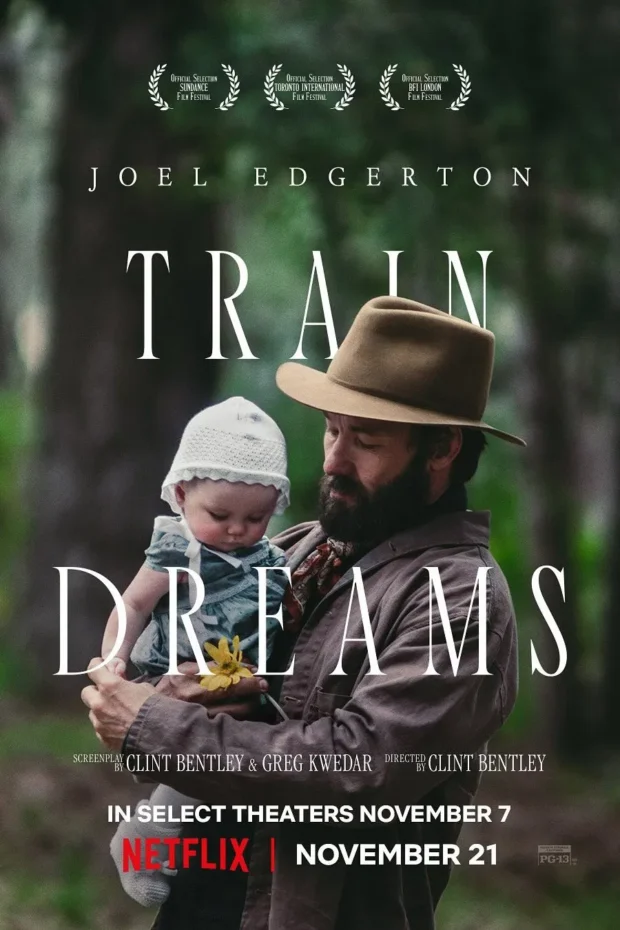
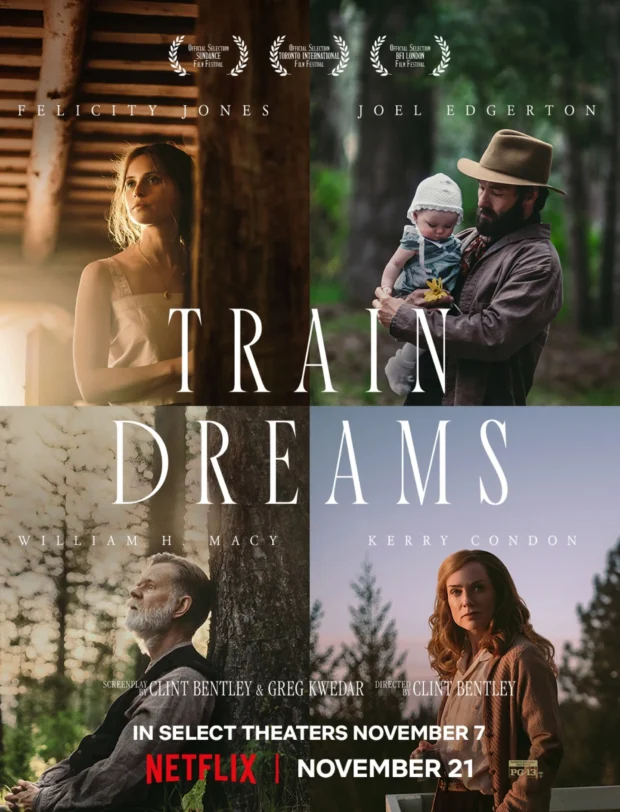
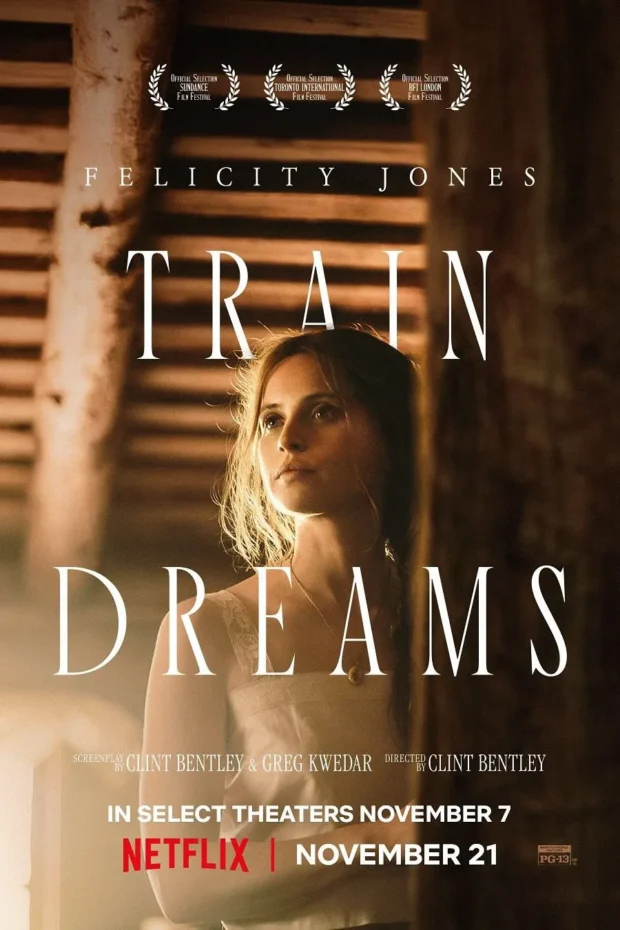
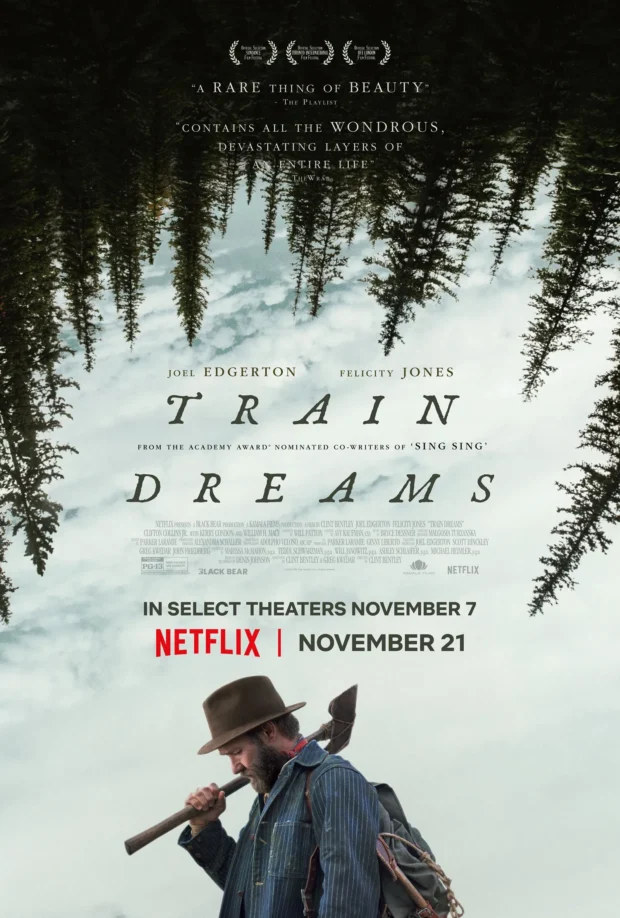
What You Should Know Before Watching Train Dreams
Edgerton’s most introspective role yet
He sheds his usual intensity for a slow, almost spiritual performance.
A Denis Johnson adaptation done right
Bentley and Kwedar preserve Johnson’s voice while deepening its cinematic heartbeat.
Bryce Dessner’s score is essential
It’s less soundtrack, more ghost. Every note lingers.
Netflix’s theatrical gamble
Two weeks in theaters starting November 7 before streaming November 21 — a rare gesture for a film this meditative.
Visual storytelling at its peak
Cinematography by Adolpho Veloso turns lumber camps into cathedrals of light and shadow.
FAQ
Is Train Dreams based on a true story?
No, but its emotional core feels lived-in. Denis Johnson’s novella captures an authentic vision of early 20th-century America — a blend of realism and myth.
What makes the trailer so striking?
Its refusal to explain. The images breathe. The editing trusts you to find meaning without a handrail — a confidence most trailers lack.
How does Train Dreams compare to Bentley’s Jockey?
If Jockey was about endurance, Train Dreams is about surrender. Both films share Bentley’s fascination with aging men standing at the edge of relevance.
Is Joel Edgerton awards-bound?
It’s early, but yes — Train Dreams feels like his most grounded and soulful work yet. Expect chatter come awards season.
Why release in theaters first?
Because Train Dreams demands a big screen. Its scope — both visual and emotional — deserves silence and darkness, not algorithmic distraction.

